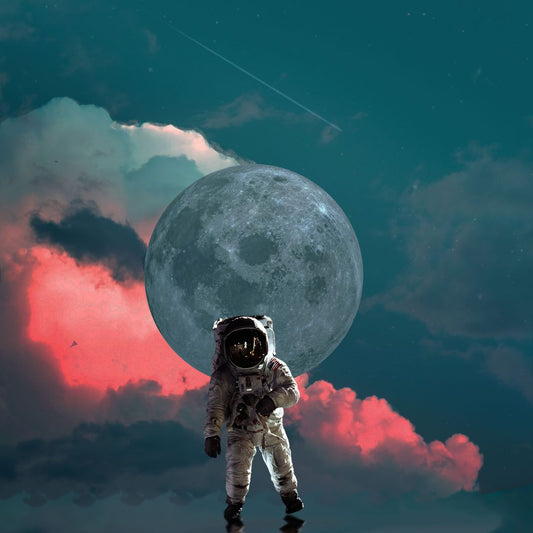A New Cosmic Mystery: Are There “Black Hole Stars”?
Share
Astronomers peering back in time with the James Webb Space Telescope (JWST) have stumbled across a set of puzzling objects — tiny red-hued spots in the early universe that don’t fit neatly into existing categories. A new hypothesis suggests these may be a brand-new class of cosmic objects: black hole stars.
🔍 What Triggered This Idea
These mysterious objects are dubbed “little red dots” (or “universe breakers”) — faint, compact, red in color, and detected in deep JWST images just 500-700 million years after the Big Bang.
Among them, one object nicknamed “The Cliff” stood out with spectral properties that couldn’t be easily explained as light from normal stars or from star-forming galaxies.
The behavior includes light signatures consistent with gas emission, cold atmospheres, and unusually dense gas surrounding a central source. These observations lead to the idea that rather than being typical galaxies or star clusters, they could be supermassive black holes encased in dense, glowing atmospheres of gas — acting like stars in appearance.
🧠 What Is a “Black Hole Star”?
Here’s how astronomers are defining or imagining this concept:
These would not be stars driven by nuclear fusion like typical stars. Instead, the energy/luminosity would come from a black hole at the center accreting (pulling in) large amounts of gas. The infalling gas heats up and emits light (especially infrared), generating a glow that mimics a star’s atmosphere.
The surrounding gas envelope must be dense and extensive enough to absorb and re-emit the radiation, giving a “star-like” outer appearance. The central black hole is essentially “hidden” inside.
These objects, if confirmed, may represent a phase in how supermassive black holes grew so early in cosmic history — possibly a direct route to forming black holes without first making huge galaxies of stars.
⚠️ What We Don’t Know (Yet)
Of course, this is still a hypothesis with many open questions:
Are these truly black hole stars, or just unusually compact/obscured galaxies or AGNs (Active Galactic Nuclei)? Some data hint they might be “hidden AGNs” with lots of surrounding dust, rather than entirely new objects.
Spectral confirmation: More detailed spectra are needed — the gas density, velocity, composition etc. — to distinguish between large star clusters, galaxy cores, and accreting black holes.
Lifecycle and evolution: If these are black hole stars, how long do they last? Do they evolve into galaxies, or dissipate?
Prevalence: Are these rare anomalies, or was there a population of them in the early universe?
🌌 Why It Matters
If this interpretation holds, it could reshape several areas of cosmology and galaxy formation:
1. Growth of Supermassive Black Holes: One big question has been: how did very massive black holes form so quickly, within a few hundred million years after the Big Bang? Black hole stars could be a mechanism.
2. Revising Early Galaxy Models: It challenges assumptions about how many early objects thought to be galaxies might actually be something else.
3. Observational Targets: JWST and upcoming telescopes (like the Extremely Large Telescope, SKA etc.) could be used to check for more of these, characterize them, and refine theories.
🛠️ What to Watch
Upcoming JWST observing campaigns focusing on “red dot” candidates.
Spectroscopic and infrared follow-ups that can measure gas motions, infer black hole accretion rates, and distinguish between star-based vs black hole-powered light sources.
Theoretical modeling to see if “black hole stars” are physically stable, and whether such objects are predicted under existing cosmological simulations.
✨ Bottom Line
The idea of black hole stars is exciting because it pushes at the boundary of what we know about early cosmic structure. It may sound speculative, but that’s often how scientific breakthroughs begin—by rethinking what we assume, then testing new ideas with sharper data.
Whether black hole stars turn out to be a new class of object or just a reinterpretation of odd galaxy cores, studying them will deepen our understanding of how the first large objects in the universe formed — and maybe how we, in our cosmic neighborhood, came to be.





